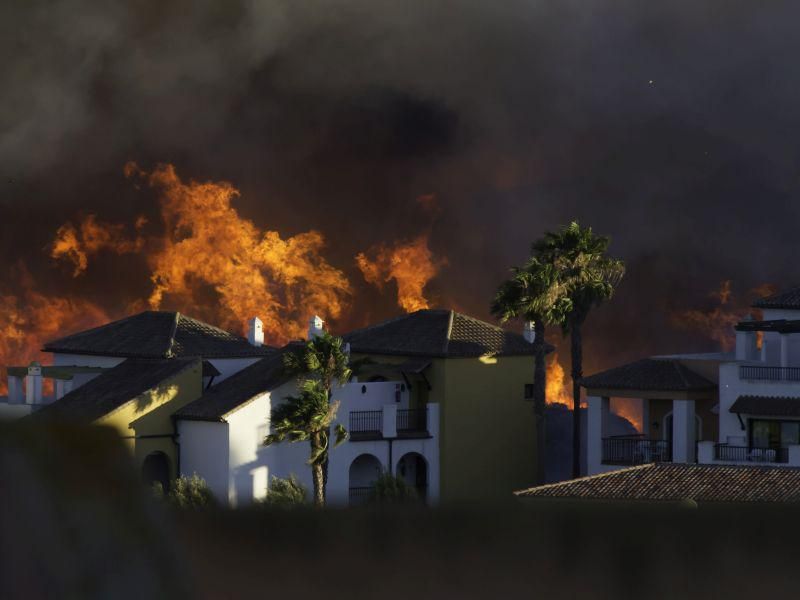MONDAY, March 8, 2021 (HealthDay News) — Fine particles in wildfire smoke pose a far greater threat to the lungs than similar particles in vehicle exhaust and other types of air pollution, researchers report.
These fine particles — called PM2.5 — have a diameter about 1/20th the size of a human hair and can get into the respiratory tract, enter the bloodstream and damage key organs.
PM2.5 is the main component of wildfire smoke. Previous lab research has concluded that PM2.5 in wildfire smoke is more dangerous than PM2.5 in other sources, and this new University of California, San Diego study confirms that at a population level.
Researchers at UCSD’s Scripps Institution of Oceanography analyzed 14 years of Southern California hospital admissions data.
In Southern California, the most severe wildfires are driven by Santa Ana winds, which tend to blow smoke toward populated coastal areas. Climate change has delayed the start of rainy season in the region, pushing wildfire season closer to the peak of Santa Ana winds in early winter.
This study linked exposure to wildfire PM2.5 to strong Santa Ana winds with fire upwind. The authors also examined smoke plume data from the National Oceanic and Atmospheric Administration.
A 10 microgram-per-cubic meter increase in wildfire PM2.5 was estimated to cause a 1.3% to 10% increase in respiratory-related hospital admissions. The same increase in PM2.5 from other sources was linked with a 1% increase in such admissions.
The findings — published March 5 in the journal Nature Communications — suggest that it may be incorrect to assume that all fine particles in the air are equally harmful. The study shows that wildfire smoke poses a significant health risk, even at a distance, according to corresponding author Rosana Aguilera, a postdoctoral scholar at Scripps.
“There is a daily threshold for the amount of PM2.5 in the air that is considered acceptable by the county and the Environmental Protection Agency (EPA),” Aguilera said in a news release. “The problem with this standard is that it doesn’t account for different sources of emission of PM2.5.”
It’s not clear why wildfire PM2.5 is more dangerous than other sources of particulate pollution, but what’s considered a safe level should be based on the source of the particles, especially in regions where most PM2.5 is expected to come from wildfires, the authors said.
“As conditions in Southern California become hotter and drier, we expect to see increased wildfire activity. This study demonstrates that the harm due to wildfire smoke may be greater than previously thought, bolstering the argument for early wildfire detection systems and efforts to mitigate climate change,” said study co-author Tom Corringham, who is also a postdoctoral scholar at Scripps.
More information
The U.S. Centers for Disease Control and Prevention has more on wildfire smoke.
SOURCE: University of California, San Diego, news release, March 5, 2021
Copyright © 2025 HealthDay. All rights reserved.

